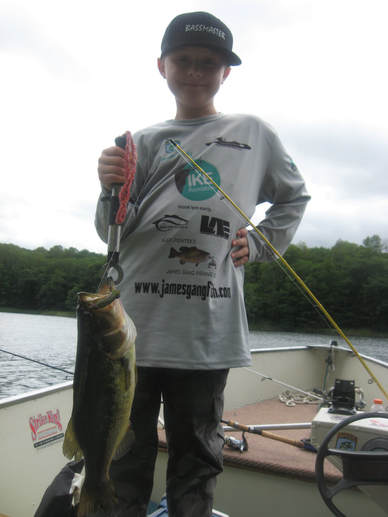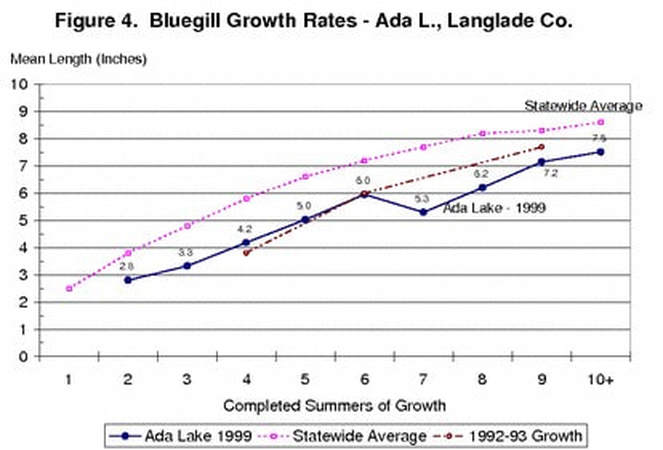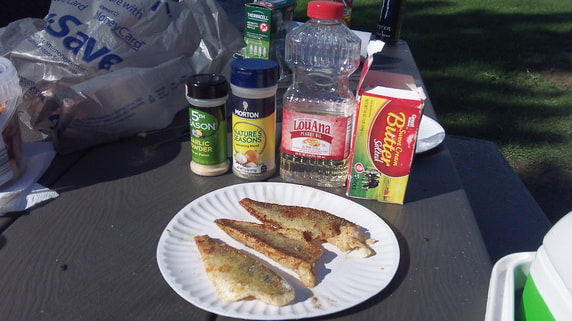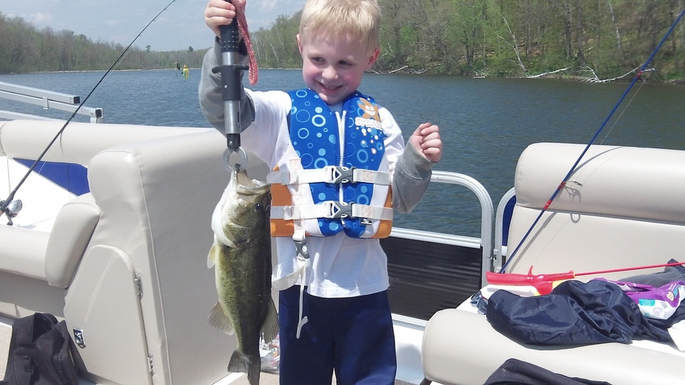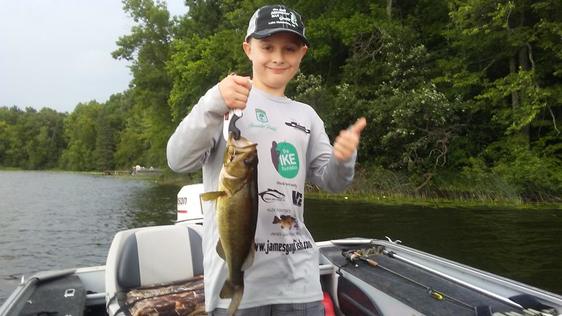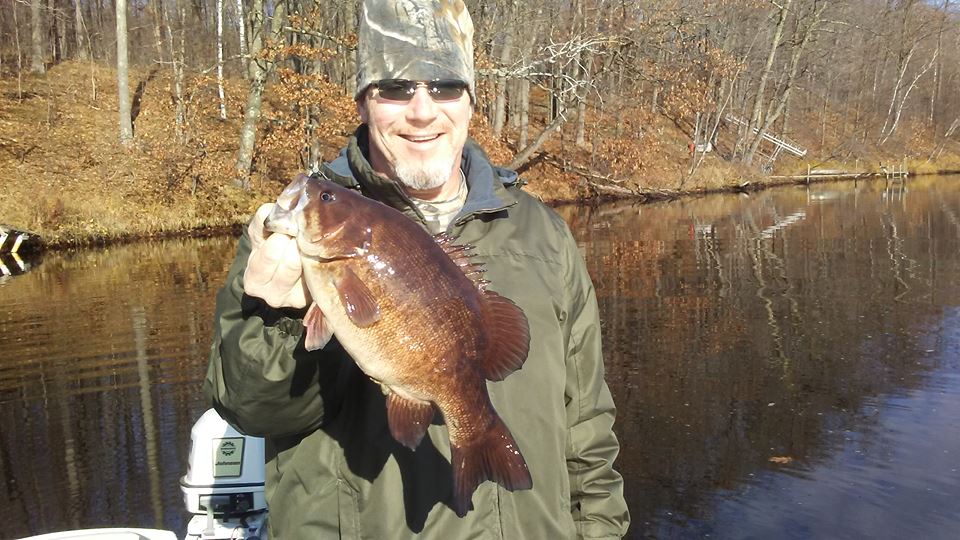THE IMPORTANCE OF CATCH & RELEASE
BY: JESSE JAMES PIONTEK
I am often asked by people “Why do you fish for bass, if you just throw them back and you don’t eat them?” I guess its a fair question. And I do understand why many people only fish for food. Fish are delicious and very healthy to eat. But I feel that all anglers need to make an attempt to conserve our fish in our local waters, as the government bag limits are set for anglers who only hit the lakes and rivers a few times a year. The hard-core anglers that bring home steady limits on a frequent basis will clean out our population of mature fish and decimate a fishery in a hurry.
I personally LOVE to eat fish. It is one of my favorite foods! But I am a realist. I live in the northern half of the United States. Our fish grow slow during the winter months. What anglers don’t realize is how long it takes for a fish to grow. Most people would consider a 7” bluegill a “keeper” for the dinner table. In Wisconsin, it can take up to SIX YEARS for a bluegill to reach this size. As far as large bluegills, such as 9 to 10 inch giants, we are talking about fish that are over TEN YEARS OLD! It can take 10 or more years to replace this fish, and considering how low the survival rate is from predation and natural causes, its very special and rare for a fish to reach this size. Not only does it take over a decade to reach this size, the potential can’t even be met unless the food supply is adequate, competition is low, and genetics are strong for massive body sizes. Removing the majority of giant fish also removes that chance of that fish to reproduce and spread its genetics into that next group of fry. Taking home limits of rare giant fish on a frequent basis will dramatically decline the fish quality just as fast as you fill your freezer. I would advise anglers that fish often to catch enough bluegills in the 6-8" range to cook a meal for his or herself. For me that is about 8 fish. If you are having a blast fishing and don't want to quit, switch to a sporting species of gamefish and after they give you several explosive strikes or you land a bunch, throw them back and enjoy the fun! If you do not get a lot of opportunities to fish in a year, then its totally understandable to try and fill that bag limit and head back to the cabin. Just because your fisheries departments allow a set amount for a bag limit doesn't mean you can't responsibly manage that body of water and personal "keep rate" yourself. You are only hurting YOUR secret lake or body of water by over-harvesting! If you are familiar with several bodies of water, you will realize that there are fisheries that contain a smaller population but higher quality fish sizes, there are lakes balanced with a moderate population and a few trophies, then there are the lakes that are abundant with population, resulting in smaller (often stunted) fish sizes. I tend to fish the lakes with abundant panfish when I am craving a delicious meal of fish. Sure, you get less meat per fish, but keeping a higher quantity of fish in these environments do not damage the population. And as an added bonus, these lakes create much more competition, which makes the fish much more aggressive. Usually the low population/high fish size structure lakes are EXTREMELY difficult to fish. Fish that are over 10 years old use their instincts more efficiently and are less willing to bite than the aggressive younger fish in competitive lakes. If you are fishing for the fun of the battle, you must consider catch and release fishing!
WHAT ABOUT GAMEFISH SUCH AS BASS, NORTHERN PIKE, & WALLEYE??
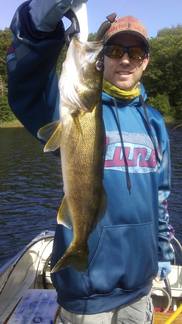
Gamefish are so sporty to catch, they MUST be protected! Most walleye fisheries in the midwest are heavily monitored by the fisheries departments and stocked accordingly using fishing license fees and tax money. When it comes to these lakes, use common sense and set fishing goals. Catching the fish-of-a-lifetime is something to be very proud of and is a huge accomplishment. Keep your goals based on how often you fish and based on what known sizes are available for your fisheries. Many people consider 5 lbs as a gigantic bass on most waters. Most anglers will never catch a 5 lb bass in their life. Avid bass anglers may catch several 5 lb bass in their life, and if they fish premium waters or southern waters that number could jump to 6, 7,8, or even 10 lb bass. When you catch a fish that you are extremely proud of and believe you may never beat it, there is nothing wrong with having that fish mounted. You earned that fish, BE PROUD! My personal goal for smallmouth bass is 6 lbs. But my preference is to go with a taxiermist that does high quality fiberglass replicas so that I can release my fish-of-a-lifetime. That being said, any bass in the sub-6 lb range, even nice fish over 5 lbs, are all released to live on. They give huge battles, they are old fish, and they can continue to grow to catch again.
I feel that bass should in almost all cases be released. I personally see two exceptions. The first one is an injury. If you hook a fish through the gills and tear them up so bad that are in two pieces or bleeding heavily, I would keep that fish. Another major injury is a deep hook located in the gullet going towards the stomach. This is too often fatal to the fish. In both of these injury scenarios, I recommend keeping that fish to eat or if its very large, to mount it. The only time that I think purposely keeping bass to eat would be on a lake that is over-populated with smaller bass. If the population is so high that it has prevented bass from reaching trophy potential, there is nothing wrong with eating a few. Hopefully these types of lakes are monitored by biologists and have a smaller minimum length size for keeping them.
I explained bass and walleye, what about northern pike? These angry fish can be the most annoying and rewarding at the same time. Several lakes are extremely over-populated with stunted pike in the 10-20" size range, and drive you crazy when they steal your baits and break your line. Then there are the 25-45" pike that are some of the greatest fighting gamefish that you could ever battle. They are what makes fishing fun! Many people don't realize that pike are delicious to eat!! I highly recommend keeping these fish for the dinner table. They are abundant, full of meat, and extremely aggressive. As far as sizes and number to keep in a day, it gets a little tricky. Northern pike are full of "Y-bones" that need to be removed when filleting. Its easy to do, but a complete waste of time on a smaller fish - you end up with a hacked up pile of fish with mostly wasted meat. When fishing pike-infested waters, I recommend keeping pike with a MINIMUM size of about 24" to get enough clean meat off of them. Fish around 27" or more are very easy to clean and give awesome cuts of meat. Anything 30" or more I would throw back because in just a few years they will get HUGE and be a real battle to fight. If your body of water has a high population of them, you should take advantage of the bag limits of the 24-30" size fish!
I feel that bass should in almost all cases be released. I personally see two exceptions. The first one is an injury. If you hook a fish through the gills and tear them up so bad that are in two pieces or bleeding heavily, I would keep that fish. Another major injury is a deep hook located in the gullet going towards the stomach. This is too often fatal to the fish. In both of these injury scenarios, I recommend keeping that fish to eat or if its very large, to mount it. The only time that I think purposely keeping bass to eat would be on a lake that is over-populated with smaller bass. If the population is so high that it has prevented bass from reaching trophy potential, there is nothing wrong with eating a few. Hopefully these types of lakes are monitored by biologists and have a smaller minimum length size for keeping them.
I explained bass and walleye, what about northern pike? These angry fish can be the most annoying and rewarding at the same time. Several lakes are extremely over-populated with stunted pike in the 10-20" size range, and drive you crazy when they steal your baits and break your line. Then there are the 25-45" pike that are some of the greatest fighting gamefish that you could ever battle. They are what makes fishing fun! Many people don't realize that pike are delicious to eat!! I highly recommend keeping these fish for the dinner table. They are abundant, full of meat, and extremely aggressive. As far as sizes and number to keep in a day, it gets a little tricky. Northern pike are full of "Y-bones" that need to be removed when filleting. Its easy to do, but a complete waste of time on a smaller fish - you end up with a hacked up pile of fish with mostly wasted meat. When fishing pike-infested waters, I recommend keeping pike with a MINIMUM size of about 24" to get enough clean meat off of them. Fish around 27" or more are very easy to clean and give awesome cuts of meat. Anything 30" or more I would throw back because in just a few years they will get HUGE and be a real battle to fight. If your body of water has a high population of them, you should take advantage of the bag limits of the 24-30" size fish!
THE MOST IMPORTANT QUESTION: WHY IS CONSERVATION IMPORTANT? WHY SHOULD YOU LISTEN TO THIS?
I am sure many people don't believe in catch and release when it comes to gamefish, and could care less about this article or my lack of qualifications to be even writing this article. But if you ignore conservation of gamefish in quality waters, you are being ignorant and selfish. Many of the true trophy waters are very small, and can't sustain heavy harvests. This problem of selfishness is real and here are a few examples:
Old Abe Lake near Jim Falls, WI was on fire from the early 2000s until around 2013. The smallmouth were abundant, they were healthy, they were girthy and powerful, they had gorgeous colors, and at times THEY WERE HUGE! This was a TROPHY fishery and these fish were thriving. This lake rarely had anglers using it, I often had the reservoir to myself or shared it with one or two other boats at a time. After the gas prices sky-rocketed, the locals chose to stay closer to home and avoid driving far north to go fishing. They found out in a hurry how great this fishery was. A wise old man at the boat ramp in 2013 saw a buddy of mine and I come off the water disgusted and confused, we couldn't seem to do well at all several trips in a row. The old angler said "that's because they are eating them all!" We thought he was NUTS. I never knew anybody that intentionally ate big healthy smallmouth bass when the area was loaded with panfish and walleye lakes. But we did know the lake was very heavily pressured the last few years, and you couldn't even park at the ramp parking lot there were so many trucks and boats present. We quit fishing that lake. The fishing became terrible. Our secret was out.
Next there was Dairyland Reservoir near Ladysmith, WI. In the 1990s this was regarded as "one of the top smallmouth fisheries" in the entire state of Wisconsin. According to local guides, a dam repair project came up around 2010, the water was drawn down very low, so anglers from hours away drove up to this famous lake filled with gigantic world-class smallmouth, cleaned out the trophy-class fish, took them home, and ate them. This lake was producing a few smallmouths approaching EIGHT POUNDS before this happened! When the lake was filled back up with water, all the anglers could catch up were a moderate population of very skinny, sub-legal smallmouth. The trophy fishery was ruined, the genetics were gone, the smallmouth fishery was below-average at best. The smallmouth bass quality has been struggling ever since.
There are a few more "secret" waters in NW Wisconsin that a few people know about, one of them is my current favorite. Full of very girthy smallmouths, this place is very special at the moment. It reminds me EXACTLY of what Old Abe Lake used to be, and the magic of this trophy fishery is bringing a smile to my face and bringing back memories of what other lakes used to be. A friend of mine that lives near this special body of water has seen people stuff pillowcases full of legal limits of these special smallmouth bass to take home and eat. Give it 5 or more years and this magical body of water will have a destroyed fishery as well. There are plenty of other average smallmouth bass fisheries in this area, plenty of waters with high populations. Cleaning house on a small trophy fishery is senseless. You are ruining the fun for yourself, children, and future generations in doing this. If you are that hungry for fish, get out and fill up a basket with a meal of panfish or keep a few "eater" walleyes or some meaty northern pike! Also freshwater drum and catfish out of a river are fantastic to eat and have plenty of meat. Don't destroy our quality fisheries with selfishness! Use common sense and judgement and learn how to conserve our special fisheries! Release healthy bass in smaller, high-quality waters and learn how to conserve trophy panfish, walleye, and pike by being smart about what you bring home to eat!!
Old Abe Lake near Jim Falls, WI was on fire from the early 2000s until around 2013. The smallmouth were abundant, they were healthy, they were girthy and powerful, they had gorgeous colors, and at times THEY WERE HUGE! This was a TROPHY fishery and these fish were thriving. This lake rarely had anglers using it, I often had the reservoir to myself or shared it with one or two other boats at a time. After the gas prices sky-rocketed, the locals chose to stay closer to home and avoid driving far north to go fishing. They found out in a hurry how great this fishery was. A wise old man at the boat ramp in 2013 saw a buddy of mine and I come off the water disgusted and confused, we couldn't seem to do well at all several trips in a row. The old angler said "that's because they are eating them all!" We thought he was NUTS. I never knew anybody that intentionally ate big healthy smallmouth bass when the area was loaded with panfish and walleye lakes. But we did know the lake was very heavily pressured the last few years, and you couldn't even park at the ramp parking lot there were so many trucks and boats present. We quit fishing that lake. The fishing became terrible. Our secret was out.
Next there was Dairyland Reservoir near Ladysmith, WI. In the 1990s this was regarded as "one of the top smallmouth fisheries" in the entire state of Wisconsin. According to local guides, a dam repair project came up around 2010, the water was drawn down very low, so anglers from hours away drove up to this famous lake filled with gigantic world-class smallmouth, cleaned out the trophy-class fish, took them home, and ate them. This lake was producing a few smallmouths approaching EIGHT POUNDS before this happened! When the lake was filled back up with water, all the anglers could catch up were a moderate population of very skinny, sub-legal smallmouth. The trophy fishery was ruined, the genetics were gone, the smallmouth fishery was below-average at best. The smallmouth bass quality has been struggling ever since.
There are a few more "secret" waters in NW Wisconsin that a few people know about, one of them is my current favorite. Full of very girthy smallmouths, this place is very special at the moment. It reminds me EXACTLY of what Old Abe Lake used to be, and the magic of this trophy fishery is bringing a smile to my face and bringing back memories of what other lakes used to be. A friend of mine that lives near this special body of water has seen people stuff pillowcases full of legal limits of these special smallmouth bass to take home and eat. Give it 5 or more years and this magical body of water will have a destroyed fishery as well. There are plenty of other average smallmouth bass fisheries in this area, plenty of waters with high populations. Cleaning house on a small trophy fishery is senseless. You are ruining the fun for yourself, children, and future generations in doing this. If you are that hungry for fish, get out and fill up a basket with a meal of panfish or keep a few "eater" walleyes or some meaty northern pike! Also freshwater drum and catfish out of a river are fantastic to eat and have plenty of meat. Don't destroy our quality fisheries with selfishness! Use common sense and judgement and learn how to conserve our special fisheries! Release healthy bass in smaller, high-quality waters and learn how to conserve trophy panfish, walleye, and pike by being smart about what you bring home to eat!!
RELEASED!!!!
